Nature's way of caring for the skin
Natural remedies are an excellent tool against illnesses and for improving the skin's appearance on both the face and body. The essential oils (referred to in the Essential oils from A to Z box) are also prepared with herbs, giving the benefits of aromatherapy. Aromatherapy is especially useful for treating skin problems because the oils are applied topically.
+ The following medicinal plants are recommended for skin care and to relieve and prevent the most common skin problems. Some plants maybe easier to find than others depending on where the plants are cultivated. You may find some as fresh plants or dried, and others in liquid form, tinctures, tablets or powder form.
NOTE
You should always consult your physician before starting any herbal treatment.
Basil
(Ocimun basilicum)
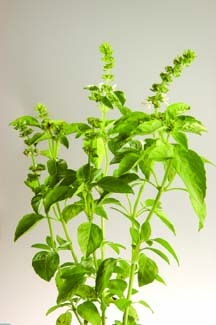
- • Parts used The leaves and stalks, fresh.
- • Native to India, this plant was introduced to Europe in the 16th century.
- • Over the centuries this plant developed a number of symbolisms: some cultures relate basil with hate and others with love. In Ayurvedic medicine basil is considered sacred and is used as a tonic.
- • Has a particular aroma, somewhere between sweet, spicy and slightly bitter. It has many properties. It's used to treat many skin problems: insect bites, itchiness, slight irritation and as a general tonic. It also has antidepressant and antiseptic powers, might reduce glucose in blood and lower blood pressure, among other curative properties.
- • Warning. This essential oil shouldn't be used during pregnancy, neither externally nor internally.
AROMATHERAPY
Ancient cultures have long used essential oils derived from plants for their therapeutic properties. Essential oils are extracted from plants, flowers, trees and shrubs using a number of techniques such as grinding, distillation and dissolving mediums. Essential extracts are mixed with a neutral vegetable oil that works as a carrier oil. Essential oils have a number of uses; they can be applied to the skin during massages (one of the most common uses in the West) and they can also be used in vapors. In the following pages, we have developed a guide of the most efficient essential oils from A to Z that may work as remedies for your skin. However, you should always consult your doctor.
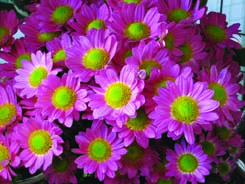
LEAVES AGAINST ITCHINESS
Basil leaves are very good for relieving itchy skin, rashes and inflammations caused by insect bites. Take a handful of fresh leaves and rub them on the affected area of the skin.
ESSENTIAL OILS FROM A TO Z
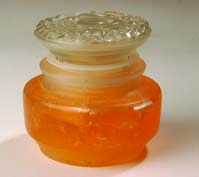
AFRICAN DAISY
This herb is a strong astringent and is rich in salicates, which have a similar action to aspirin. The roots and flowers are used; the petals have sedative and astringent properties, making them useful on oily skin. Pomades made from African daisy are used on sunburns and skin spots.
ALMOND
Sweet and pleasant aroma. This essential oil relaxes and is comforting, relieving fine lines and wrinkles on the skin caused by tension. It's especially recommended for moisturizing and toning dehydrated skin.
WARNING
Essential oils are for external use only , they should never be ingested. Keep stored away from children and keep away from your eyes.
Aloe
(Aloe vera)
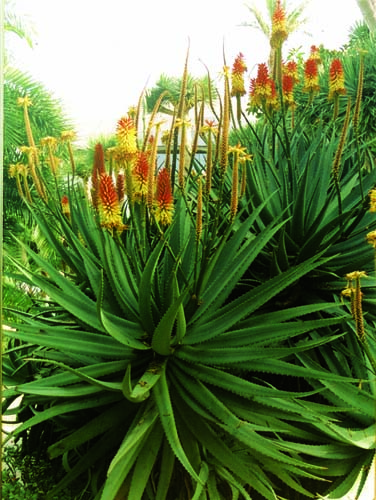
- • Parts used. The leaves, especially the transparent gelatinous liquid extracted from the leaves.
It's recommended to use the leaves at the base of the plant.
- • Aloe is a perennial succulent native to East and South Africa. Today, aloe is grown as a houseplant throughout the world. This plant gained popularity in the 1950's, when the medical field proved its curative properties against scars and burns. Thanks to this species many of the burn victims of the Chernobyl disaster in Russia found some cure or relief from their skin injuries.
- • It is used as a moisturizer and an emollient. When applied externally, aloe vera restores skin tissues and may aid the healing of burns and sores. It can also be used on blemishes and dandruff. It is also used to treat scabies and varicose ulcers. Used cosmetically, aloe vera softens the skin and hair.
- • Warning. Do not ingest or apply the yellow bitter juice extracted from the leaves’ base on the skin.
CURING LEAVES
Cut an aloe vera leaf in two, long ways. Pass a spatula to collect the transparent aloe gel. This plant has an infinite number of cosmetic uses, add this gel to a neutral cream, without alcohol and mix well. This repairing gel can be applied to burns and eczemas twice a day.
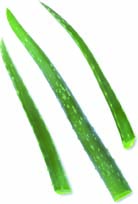
Oatmeal
(Avena sativa)
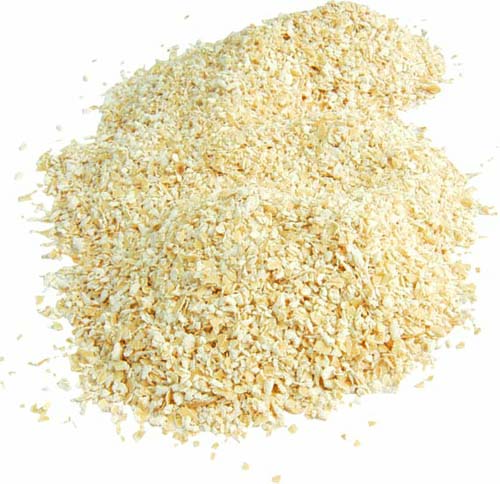
- • Parts used The entire plant.
- • Traditional crop in Northern Europe. This grain is eaten hot and sweet, ideal for cold weather. The grains have similar properties to the entire plant. The grain is milled at the end of the summer to make oat flour and oatmeal.
- • Because of it's high content of vitamins B and E and carotenes, it's a nutrient rich food for the skin.
- • To prepare oats medicinally, the entire plant is used as a decoction, dried to add to lotions or to curative baths for skin problems. Typical oatmeal available in the supermarket can be used in recipes to treat eczema, herpes and sores.
- • Warning. Use caution when using an oat poultice on a person who has allergic reactions to gluten. It's essential to first allow the sediment to settle and then only use the clear liquid decanted.
SWEET MASK
To treat irritated or dry skin, accompanied by fatigue and scaling, we recommend this mask. Place 2 tablespoons of oatmeal in a bowl with 1 tablespoon of honey and add another 3 tablespoons of camomile infusion. Mix well and apply to the face using circular massages. Leave on the face for 10 minutes and remove with a gentle sea sponge and cold water. This is a natural exfoliant that will leave the skin smooth and soft.
ESSENTIAL OILS FROM A TO Z

APRICOT KERNEL
This oil has a deep golden color and intense aroma. It has a soft and smooth texture that helps to restore tired skin, bringing back vigor and firmness. Because of its restoring properties, it's added to creams. It can be used in aromatherapy and massages. It's a natural perfume that easily penetrates and is commonly used for children.
ARNICA
This plant stimulates blood circulation and is used for cases of hair loss, when the hair begins to fall out or the process accelerates. Apply as a cream or salve on the affected areas of the scalp. You can also use a diluted tincture to clarify the hair.
Safety. Do not apply during pregnancy. Do not use on skin that's chapped.
PURIFYING AND MOISTURIZING STEAM
Boil 2 cups of water and place in a bowl. Add 15 drops of hemp oil. To give yourself a facial steam sit comfortably with your head covered with a towel (to conserve heat and steam) and allow the steam to penetrate your pores for 10 minutes.
Burdock
(Arctium lappa)
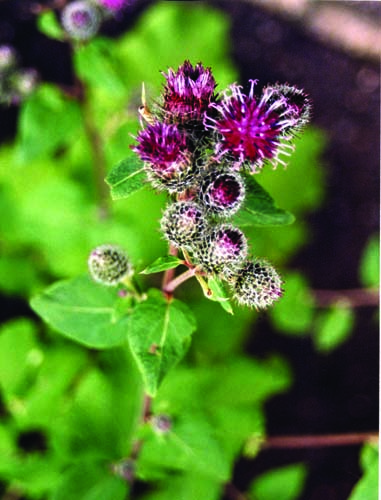
- • Parts used The leaves, fruit (that contains the seeds) and roots are used as medicinal herbs.
- • Native to Asia and Europe. Traditionally used by ancient cultures as a natural remedy for gout, fever and kidney stones. Today, this plant is grown throughout the world.
- • The roots and seeds help the body to release waste, including toxins that are related to chronic skin problems. Because of its diuretic and antibiotic action it helps to relieve skin problems, especially when toxins and bacteria are determining factors. Used for cases of white heads, acne (used as ointment or lotions), localized infections (for example, fungus infections such as athletes foot and ringworm). In general, this herb is not used alone, but with other herbs such as dandelion.
- • Warning. It's not recommended using this herb during pregnancy or while breastfeeding. Do not use for children under 6 years old, unless indicated by your doctor.
Marigold
(Caléndula officinalis)
- • Parts used. The petals and flower heads are used fresh or dried (petals that are a deep orange indicate a high level of active ingredients).
- • Native to Southern Europe, it is currently cultivated in mild climates worldwide. It's one of the most widely used herbs for its anti-inflammatory properties.
ANTI-SKIN SPOT MIXTURE
Prepare a decoction with 2 teaspoons of burdock root and 5 teaspoons of dandelion root. Drink this infusion twice daily, for 2 months straight for it to be more effective in purifying and cleansing the body and clarifying skin spots.
- • It's used specifically to treat skin problems, from inflamed skin to wounds. Its antiseptic and curative properties help to stop infections. It also helps to purify the skin. In tinctures and infusions it can be used to treat any type of chronic infection. It's recommended for most slight skin problems: inflammations, scratches, cuts and burns, including sunburns. It's famous for treating acne, sores and certain types of mycosis. It's also very effective to help sooth diaper rash and irritated nipples during breast-feeding.
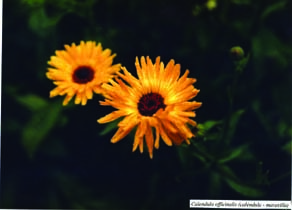
ESSENTIAL OILS FROM A TO Z
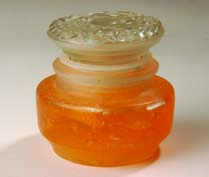
BLUE POPPY
A pale yellow color and soft aroma, it is used to prepare creams and is also used for massages. It moisturizes and releases tensions in the face, softening the skin and reducing the appearance of wrinkles. Has a high content of essential fatty acids and natural antioxidant properties. When it is inhaled, its aroma brings a sense of serenity and substance (before using consult a specialists).
Safety. It's not recommended using during pregnancy or while breastfeeding.
CABBAGE
This oil extracted from cabbage may be very useful in treating inflammations caused by the sebaceous glands, such as blackheads and pimples. Because of its antibacterial and anti-inflammatory properties it's recommended for fighting acne and other minor skin problems. It can be combined with other cleansers such as patience dock and burdock tinctures.
DETOXIFYING SALAD
Wash well milk thistle leaves, tear them with your hands and add to a salad. Add a dressing to taste. Leaves can also be used to make an infusion that helps to stimulate digestion.
Milk thistle
(Silybum marianusm)
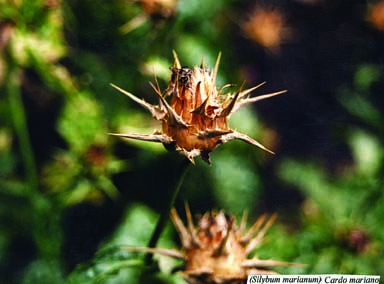
- • Parts used. Flowers, leaves and seeds. The leaves can be eaten fresh or prepared as an infusion.
- • It's also known as Holy thistle or St. Mary's thistle, in ancient times it was used to stimulate breast milk production.
- • It's widely used to prevent and relieve skin affections. It has important antioxidant properties and is a hepatic detoxicant (today it's considered one of the most important liver restorers and tonics), its action is related to cleansing the skin. It is also used to treat herpes.
- • It can be taken as a tincture (take between 20-50 drops diluted with water to help relieve hepatic and gallbladder ailments). An infusion of fresh leaves may help to prevent aging of the skin.
- • Warning. Although it doesn't present any side effects, it's not recommended for people who suffer from high blood pressure.
Tea tree
(Melaleuca alternifolia)
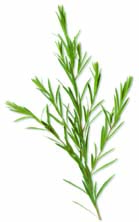
- • Parts used The leaves. When they are ground they release an intense aroma.
- • Native to Australia, this plant is used in traditional aboriginal medicine as a natural antiseptic. Western scientists began to study this plant's therapeutic properties in the 1920's. Today, it is widely used in Europe and in the US. The English name tea tree has been adopted as this plant's name in many parts of the world.
- • It's useful for relieving burns, wounds and other infections. It's widely used to treat skin infections, calluses, warts, acne, whiteheads and other skin problems.
- • Warning. It shouldn't be used if you suffer from epilepsy or other neurological illnesses.
Dandelion
(Taraxacum officinale)
- • Parts used. Leaves and roots.
- • Although this plant currently grows in most parts of the world, it is native to Europe and Asia where it grew abundantly in the wild.
- • This plant's therapeutic properties were discovered in the Orient to treat hepatic ailments, reddening and swollen eyes and against hepatitis.
Its detoxifying properties help to relieve the effects of pollution on the body. This herb is used to remove waste and toxins from the body, in particular the skin, making it appear clearer.
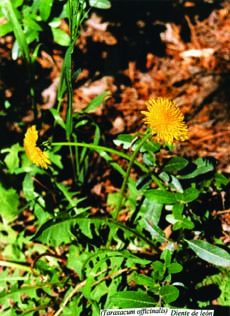
ESSENTIAL OILS FROM A TO Z
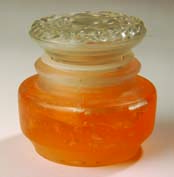
CHELIDONIUM MAJUS
This essential oil extracted from the herb is widely known for its effective treatment of viruses and warts, and other skin problems of the epidermis. How to use: squeeze the gel from the stems of chelidonium, mix with a neutral oil and apply directly to the wart twice daily for at least 2-3 weeks.
Safety. It's best to avoid contact with surrounding skin.
GERANIUM
Floral, sweet, light aroma similar to lemon. It's ideal for use at night, helping you to sleep soundly and pleasantly. Because of its diuretic properties it is recommended for the skin. It helps to essen or prevent cellulitis, helping to relieve water retention. In general, this oil is recommended for any skin type because it balances sebum production.
Safety. Shouldn't be used during pregnancy.
- • The leaves are rich in potassium that naturally balances this plant's diuretic actions. The roots are used as a tonic to remove toxins from the liver and to attack skin problems such as eczema and acne.
- • It's used fresh in salads and soups or in tonic spirits (one small glass per day) or as an infusion. The leaves are also used as a tincture.
- • Warning. Because it stimulates digestion, in cases of acid reflux or ulcers you should use this plant after meals.
FACIAL TONIC
To relieve bags under the eyes and dark spots on the face caused by tiredness you can prepare a cold tea infusion of camomile, marigold or mallow. Apply to the eyes for 15 minutes.
Mallow
(Malva sylvestris)
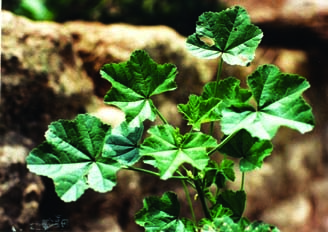
- • Parts used The leaves, flowers and roots.
- • Widely used by the ancient Greeks and Romans, who ate this plant mixed with other vegetables.
- • As an infusion, it helps to treat digestive affections and constipation. It can also be used to treat inflammations in the urinary tract.
- • Used externally this plant can be added to lotions and compresses to relieve skin problems such as whiteheads, sores and other lesions. In baths it can be used to relieve hemorrhoids.
- • This plant is rich in vitamins A, B, C and E. Because of its emollient properties it's widely used in cosmetics to treat the skin.
RASFBERRY MASH FOR THE FACE
Thoroughly mash 6 red raspberries to form a paste; add 1 teaspoon of sugar and a few drops of raspberry essential oil and mix. Apply to thoroughly clean skin and leave on for 10 minutes.
ESSENTIAL OILS FROM A TO Z
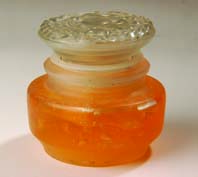
HEMP
Has a dark green color, soft aroma and pleasant taste. It has been widely used as a natural cosmetic to treat dry skin. Because of its moisturizing properties, it's ideal for making body emulsions or masks to improve dry skin. You can give or receive massages with hemp oil at least once a week. Hemp oil, when combined with aloe vera is a great treatment after shaving. It doesn't present any side effects.
JUNIPER
Fresh and clean aroma, somewhat earthy and woody. This oil is used to clean and remove toxins and waste from the body, making it a useful treatment against cellulitis, acne and discomforts brought on by excessive alcohol and food. It's also used to clear the mind.
Safety. As most essential oils, juniper shouldn't be used during pregnancy or while breast-feeding, or for children, with the exception of a medical prescription.
Roman camomile
(Chamaemelum nobile)
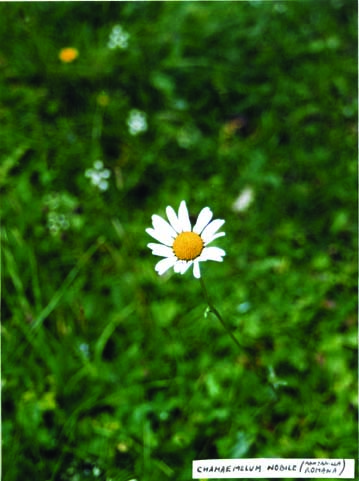
- • Parts used. The flowers.
- • Ancient Egyptians used this plant; historians say that Cleopatra used camomile as a secret beauty treatment.
- • There are two types of camomile, Roman and common (that has a bitter taste) and German camomile that is somewhat similar. Both varieties are found in Europe and have been introduced to the Americas.
- • It is used topically as an emollient, it can also be used in cream or salve form to treat certain problems such as dry and irritated skin. It is also used as a compress for wounds, to help prevent scarring, and as an eye bath to relieve tired eyes. It's hypoallergenic and is used to effectively treat eczema. As an infusion camomile can be used for children and adults.
- • Warning. It shouldn't be used during pregnancy, neither externally nor internally. For symptoms of tiredness you can use cold tea bags of camomile, marigold or mallow. Apply to the skin for 15 minutes.
RELAXING BATH
Fill a wide necked jar with sunflower seed oil and add a handful of fresh camomile and valerian in equal quantities. Cover and leave sitting in the sun for two days. Filter and repeat the process with more fresh herbs 10 times. Store, tightly covered, in a dark place. Add 1 teaspoon to a bathtub to relax and give relief to the skin and the entire body.
Lemon balm
(Melissa officinalis)
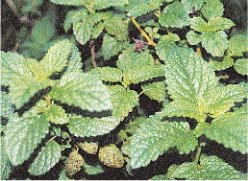
- • Parts used. The leaves are used, fresh and dry, to make infusions.
- • Native to Southern Europe, Western Asia and North Africa. Currently, lemon balm is grown in many parts of the world.
- • In ancient times this fragrant herb was famous for its sedative properties. New studies have shown that this plant has properties which can treat a number of skin problems such as cold sores.
Polyphenols found in the plant act against viruses, and are used to fight cold sores. As a relaxing tonic, it can help to neutralize states of anxiety, slight restlessness, desperation and irritability.
Evening primrose
(Oenothera biennis)
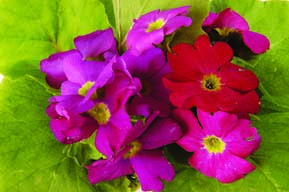
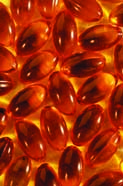
- • Parts used. The seeds are used to make infusions and essential oils.
- • Native Americans used this plant and its seeds for many centuries as an infusion with hot water to treat wounds, skin problems and asthma.
- • This plant has essential fatty acids that play a fundamental role in the metabolism and cellular structure (lack of fatty acids causes the skin to dry and become inflamed, amongst other things). Used topically or orally this plant is used to stimulate blood circulation to the skin and to renew old skin cells, it's used to keep the skin firm and healthy. To treat eczema, it can be mixed with a neutral oil to massage onto the legs and arms.
- • Warning. Shouldn't be used in cases of epilepsy or applied to very sensitive skin because sometimes it can make the skin react with rashes.
ESSENTIAL OILS FROM A TO Z
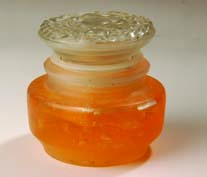
ORANGE
Very effective essential oil for treating cellulitis and other skin problems, because it helps to stimulate blood circulation. It is widely used in cosmetic, and medicines, baths, massages, steams and compresses. The fruit acids it contains have powerful effects against premature wrinkles. This oil also contains anti-depressant and sedative properties.
RASPBERRY
This oil can be used to moisturize the skin and to further protect the skin from solar rays. Because of its high content of essential fatty acids and vitamin E, it's especially recommended to treat the epidermis. Raspberry essential oil is also used to protect muscle tissue against the damage caused by oxidation, which is why it's useful in fighting and preventing premature wrinkles.
Sage
(Salvia officinalis)
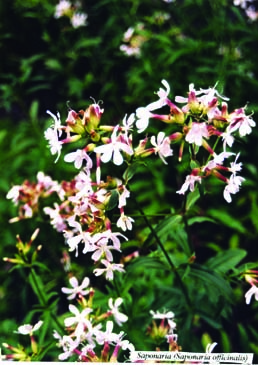
- • Parts used. The leaves and flowers, in particular the leaves are used fresh or dry. They have antiseptic, astringent, anti-inflammatory and antibacterial properties.
- • Native to the Mediterranean, but today sage is cultivated in most parts of the world, especially in sunny climates. There are over 500 species, in which the purple garden sage is the best for medicinal use.
- • This herb is multi-use. For the skin it is useful for treating inflamed skin. Fresh leaves can be used to immediately treat insect bites. As a cream it can be used to treat rashes. As an infusion it's good for treating dandruff.
- • Warning. It's not recommended using sage therapeutically during pregnancy or for epileptics.
Bouncing bet
(Saponaria officinalis)
- • Parts used. the leaves, flowers and roots are used to make decoctions.
- • Native to coastal areas in the Mediterranean. It grows in moist places, sand or land rich in humus.
- • This plant has been cultivated since ancient times. When mashed it can be used as a substitute for soap. It is also used to prepare tinctures and syrups. As a decoction, fresh or dried, it is a purifying treatment. The roots, cut into pieces, can be prepared as a decoction to fight against coughs. The dried rhizome works to wash away oil in the hair. It can also be used to treat over active oil glands and acne.
- • Warning. In excess this herb can be toxic.
VOLUME, LUSTROUS HAIR
With a cotton ball, apply a generous amount of rosehip oil to the roots of the hair and the scalp, pressing lightly so that it penetrates better. Gently massage with your fingertips and distribute throughout the hair with a towel and leave on for 2-3 hours. Wash your hair with your normal shampoo.
Tea
(Camellia sinensis)
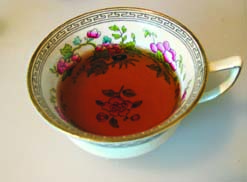
- • Parts used. The leaves are used to make infusions.
- • Native to southern China, it is one of the fundamental herbs in traditional medicine. This herb, through a diverse process of fermentation, is prepared as black or as green tea. It is also considered a lucky, miracle cure, and studies have shown that it helps to fight cancer. It also has important stimulant, digestive, circulatory, antibacterial and astringent properties. It's a diuretic herb that is beneficial for the skin. It has antioxidant properties that are good for fighting against premature aging.
- • Applied topically it's used to treat inflammations caused by bug bites and on the eyes to treat conjunctivitis and tired eyes.
- • Warning. It's advised to use tea with precaution during pregnancy and breastfeeding.
ESSENTIAL OILS FROM A TO Z
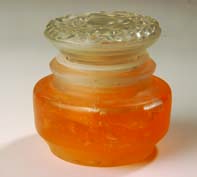
ROSEHIP
Because of its high nutrient content of vitamins A, E, C, B 1 and B 2 , it has exceptional properties for fighting against scarring. It's polisaturated fatty acids are used to restore cellular membranes and skin tissue. It helps to prevent premature aging and reduces fine lines, especially crows feet and stretch marks. It is also good for treating dry, dull skin or sun damaged and rough skin.
SANDALWOOD
Sandalwood oil is one of the most fragrant and sweet essential oils. It is used in aromatherapy and perfumes. It is excellent for refreshing the skin and is used specifically for dry skin. It is relaxing and relieves tension, anxiety and stress.

Comment about this article, ask questions, or add new information about this topic: